Fiat 500 vs Peugeot 308 SW – Which one offers the better deal?
Everyday use, family trips or long-distance drives – here’s where the differences show.
Discover whether Fiat 500 or Peugeot 308 SW fits your lifestyle better.
Costs and Efficiency:
Price and efficiency are key factors when choosing a car – and this is often where the real differences emerge.
Fiat 500 has a decisively advantage in terms of price – it starts at 21400 £, while the Peugeot 308 SW costs 30100 £. That’s a price difference of around 8700 £.
In terms of energy consumption, the advantage goes to the Fiat 500: with 13 kWh per 100 km, it’s a bit more efficient than the Peugeot 308 SW with 15.30 kWh. That’s a difference of about 2.30 kWh.
As for range, the Peugeot 308 SW performs somewhat better – achieving up to 410 km, about 79 km more than the Fiat 500.
Engine and Performance:
Power, torque and acceleration say a lot about how a car feels on the road. This is where you see which model delivers more driving dynamics.
When it comes to engine power, the Peugeot 308 SW has a clearly perceptible edge – offering 195 HP compared to 118 HP. That’s roughly 77 HP more horsepower.
In acceleration from 0 to 100 km/h, the Peugeot 308 SW is a bit quicker – completing the sprint in 7.70 s, while the Fiat 500 takes 9 s. That’s about 1.30 s faster.
In terms of top speed, the Peugeot 308 SW performs noticeable better – reaching 225 km/h, while the Fiat 500 tops out at 150 km/h. The difference is around 75 km/h.
There’s also a difference in torque: Peugeot 308 SW pulls evident stronger with 300 Nm compared to 220 Nm. That’s about 80 Nm difference.
Space and Everyday Use:
Whether family car or daily driver – which one offers more room, flexibility and comfort?
Seats: Peugeot 308 SW offers a bit more seating capacity – 5 vs 4.
In curb weight, Fiat 500 is slightly lighter – 1330 kg compared to 1475 kg. The difference is around 145 kg.
In terms of boot space, the Peugeot 308 SW offers significantly more room – 608 L compared to 185 L. That’s a difference of about 423 L.
In maximum load capacity, the Peugeot 308 SW performs significantly better – up to 1634 L, which is about 1084 L more than the Fiat 500.
When it comes to payload, Peugeot 308 SW clearly perceptible takes the win – 500 kg compared to 305 kg. That’s a difference of about 195 kg.
Who wins the race?
The Peugeot 308 SW proves to be outperforms in nearly all aspects and therefore becomes our DriveDuel Champion!
Peugeot 308 SW is the better all-rounder in this comparison.
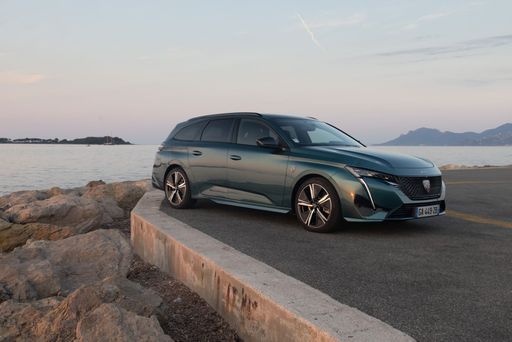
Peugeot 308 SW
Fiat 500
The Fiat 500 is a compact and stylish city car that has captured the hearts of urban drivers with its charming retro design. Its nimble handling and efficient engine make navigating tight city streets a breeze, while its cosy interior offers a surprising amount of comfort and modern technology. The car's iconic silhouette and vibrant colour options ensure it stands out, offering a unique blend of timeless appeal and contemporary flair.
details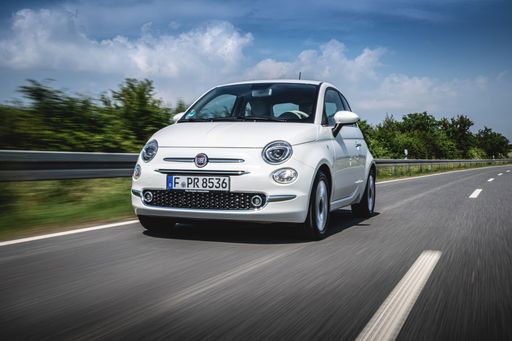 @ media.stellantis.com
@ media.stellantis.com
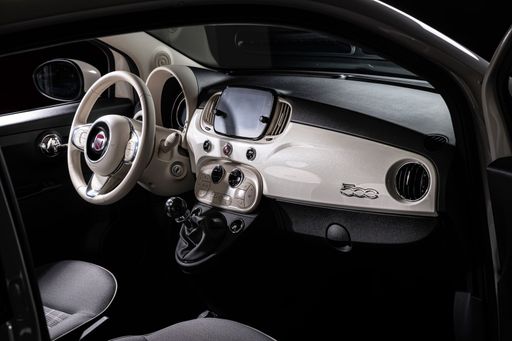 @ media.stellantis.com
@ media.stellantis.com
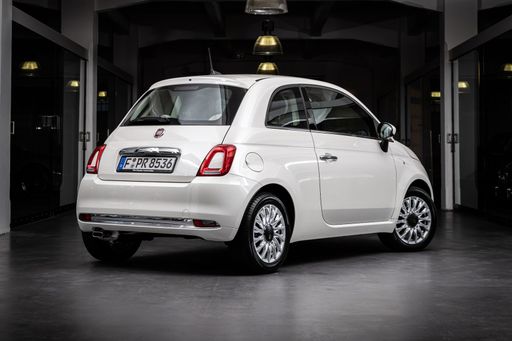 @ media.stellantis.com
@ media.stellantis.com
Peugeot 308 SW
The Peugeot 308 SW impresses with its stylish design and practical nature, making it a standout in the estate car category. Its spacious interior is complemented by a high-quality finish, offering comfort for both the driver and passengers. The vehicle also boasts advanced technology features, ensuring a modern and enjoyable driving experience.
details @ media.stellantis.com
@ media.stellantis.com
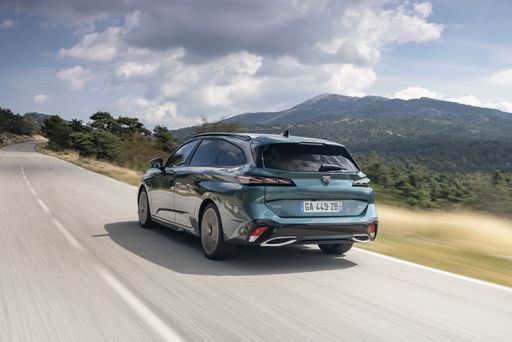 @ media.stellantis.com
@ media.stellantis.com
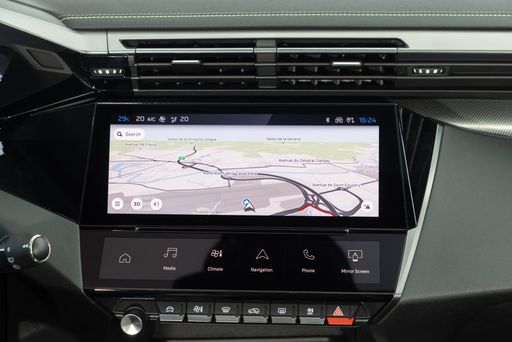 @ media.stellantis.com
@ media.stellantis.com
 @ media.stellantis.com
@ media.stellantis.com
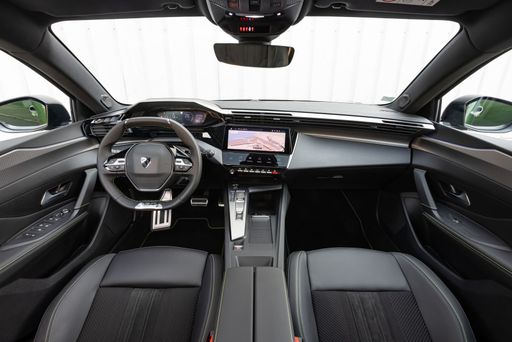 @ media.stellantis.com
@ media.stellantis.com

|

|
|
|
|
Costs and Consumption |
|
|---|---|
|
Price
21400 - 30800 £
|
Price
30100 - 42700 £
|
|
Consumption L/100km
-
|
Consumption L/100km
0.8 - 5.1 L
|
|
Consumption kWh/100km
13 - 14.7 kWh
|
Consumption kWh/100km
15.30 kWh
|
|
Electric Range
190 - 331 km
|
Electric Range
78 - 410 km
|
|
Battery Capacity
21.3 - 37.3 kWh
|
Battery Capacity
51 kWh
|
|
co2
0 g/km
|
co2
0 - 134 g/km
|
|
Fuel tank capacity
-
|
Fuel tank capacity
42 - 53 L
|
Dimensions and Body |
|
|---|---|
|
Body Type
Hatchback
|
Body Type
Estate
|
|
Seats
4
|
Seats
5
|
|
Doors
3 - 4
|
Doors
5
|
|
Curb weight
1330 - 1475 kg
|
Curb weight
1475 - 1791 kg
|
|
Trunk capacity
185 L
|
Trunk capacity
467 - 608 L
|
|
Length
3632 mm
|
Length
4636 mm
|
|
Width
1683 mm
|
Width
1852 mm
|
|
Height
1527 mm
|
Height
1442 mm
|
|
Max trunk capacity
550 L
|
Max trunk capacity
1402 - 1634 L
|
|
Payload
250 - 305 kg
|
Payload
409 - 500 kg
|
Engine and Performance |
|
|---|---|
|
Engine Type
Electric
|
Engine Type
Diesel, Electric, Petrol MHEV, Plugin Hybrid
|
|
Transmission
Automatic
|
Transmission
Automatic
|
|
Transmission Detail
Reduction Gearbox
|
Transmission Detail
Automatic Gearbox, Reduction Gearbox, Dual-Clutch Automatic
|
|
Drive Type
Front-Wheel Drive
|
Drive Type
Front-Wheel Drive
|
|
Power HP
95 - 118 HP
|
Power HP
130 - 195 HP
|
|
Acceleration 0-100km/h
9 - 9.5 s
|
Acceleration 0-100km/h
7.7 - 10.9 s
|
|
Max Speed
135 - 150 km/h
|
Max Speed
170 - 225 km/h
|
|
Torque
220 Nm
|
Torque
230 - 300 Nm
|
|
Number of Cylinders
-
|
Number of Cylinders
3 - 4
|
|
Power kW
70 - 87 kW
|
Power kW
96 - 144 kW
|
|
Engine capacity
-
|
Engine capacity
1199 - 1598 cm3
|
General |
|
|---|---|
|
Model Year
2023 - 2025
|
Model Year
2023 - 2025
|
|
CO2 Efficiency Class
A
|
CO2 Efficiency Class
D, A, C, B
|
|
Brand
Fiat
|
Brand
Peugeot
|
What drivetrain options does the Fiat 500 have?
The Fiat 500 is offered with Front-Wheel Drive.
The prices and data displayed are estimates based on German list prices and may vary by country. This information is not legally binding.
